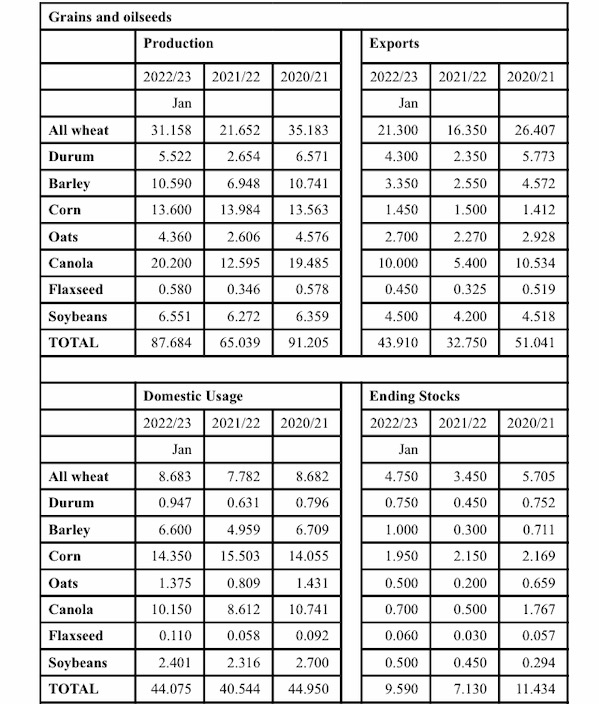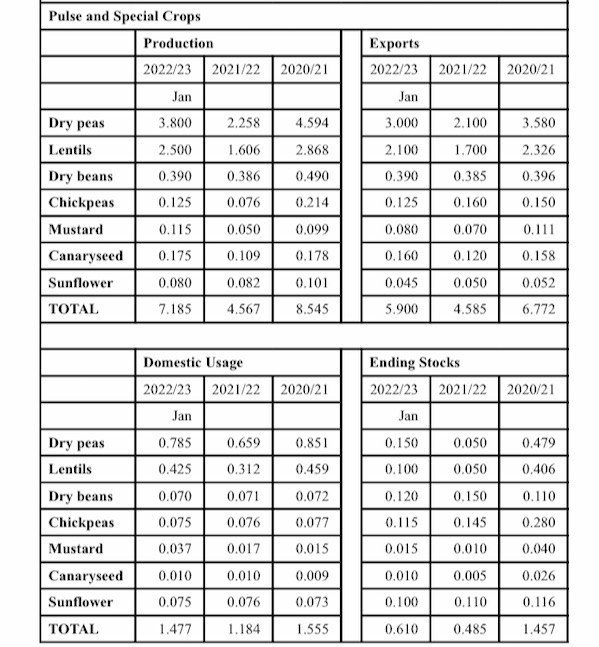MarketsFarm — A return to trend-line yields after the past year’s drought should lead to a significant increase in Canadian crop production in 2022, according to the first supply/demand estimates for the 2022-23 season from Agriculture and Agri-Food Canada (AAFC), released late Friday.
Seeded area is expected to be up for wheat and the pulses, but down slightly for canola.
Total seeded wheat area is forecast to increase by five per cent, at 24.83 million acres. Durum area is forecast to be up by nine per cent, at 6.05 million acres.
Read Also

U.S. grains: Soy futures set 15-month high after China agrees to purchases
U.S. soybean futures reached a 15-month high on Thursday after President Donald Trump’s administration said top-importer China agreed to buy tens of millions of tons of American crops in the next few years as part of a trade truce.
Total wheat production excluding durum is forecast to increase by 35 per cent on the year, to come back in line with the five-year average at 25.636 million tonnes. Durum production is expected to be more than double the 2021-22 drought-stricken crop at 5.522 million tonnes.
The larger wheat and durum crops should also lead to increased exports in 2022-23.
Seeded canola area is forecast at 21.75 million acres, which would be down by three per cent. However, an expected return to normal yields would see a 60 per cent increase in production to 20.2 million tonnes. Both exports and domestic usage for canola are forecast at 10 million tonnes, which would mark 85 per cent and 18 per cent rises respectively. Total canola ending stocks are still forecast to be relatively tight, rising to 700,000 tonnes from an estimated 500,000 for 2021-22.
Seeded barley area is forecast at 8.15 million acres, which would be down by two per cent. However, production is forecast to increase by 35 per cent, hitting a projected 10.59 million tonnes. Domestic feed use and exports are both forecast to rise with the larger supplies.
Pea and lentil acres are both expected to see slight increases on the year, at 4.08 million and 4.45 million acres respectively. Pea production is forecast to be up by 68 per cent, at 3.8 million tonnes, while lentil production is expected to be up by 56 per cent at 2.5 million tonnes.
Tables: January estimates for Canadian major crops’ supply and demand, in millions of metric tonnes. Source: Agriculture and Agri-Food Canada.















